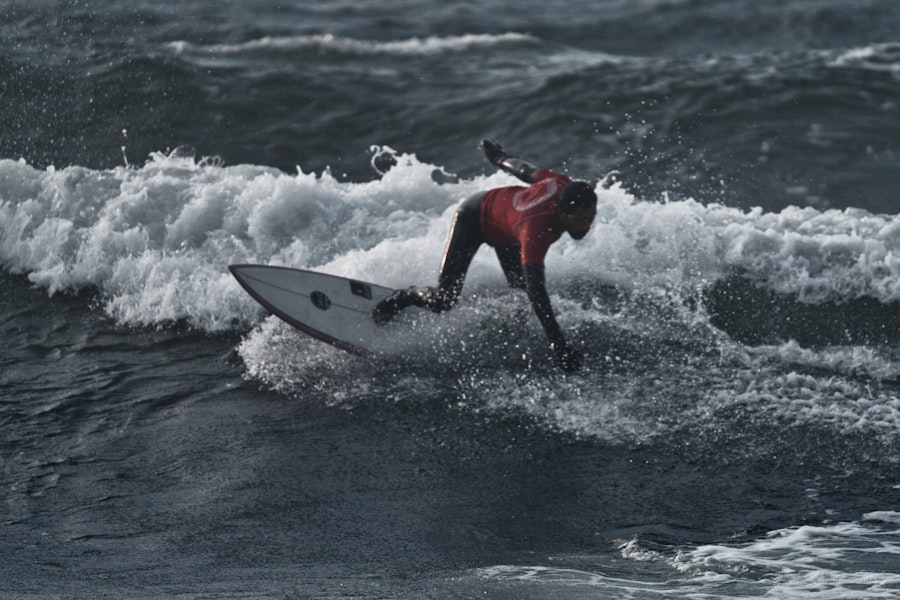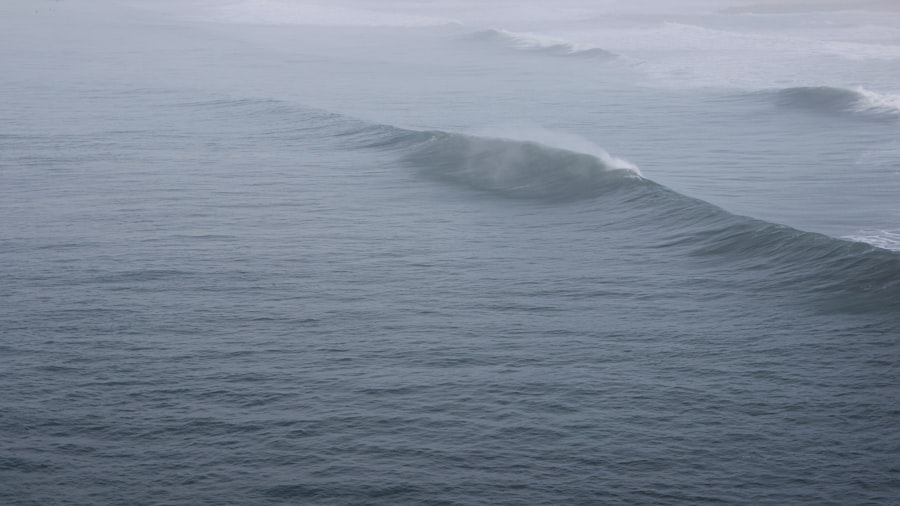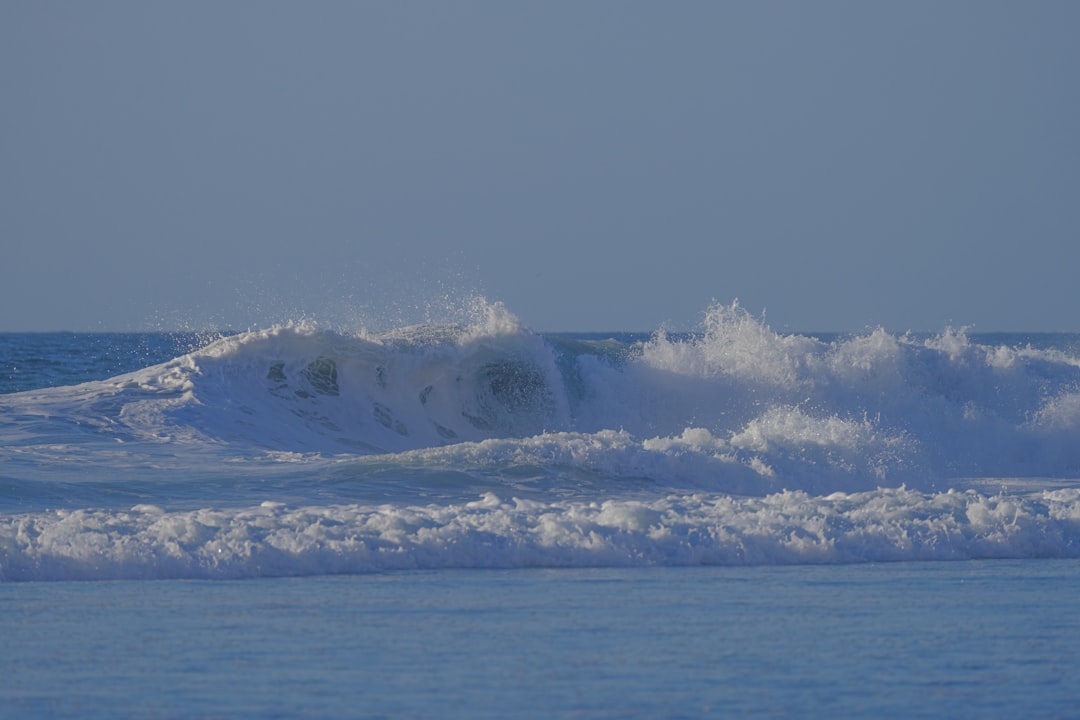The Drake Passage, a body of water situated between the southern tip of South America and Antarctica, is renowned for its tumultuous seas and unpredictable weather patterns. Spanning approximately 800 kilometers, this passage serves as a critical maritime route for vessels navigating between the Atlantic and Pacific Oceans. Its waters are often characterized by fierce winds, towering waves, and a unique confluence of ocean currents, making it one of the most challenging marine environments in the world.
The Drake Passage has captured the imagination of adventurers and seafarers alike, drawing them into its depths with the promise of both peril and exhilaration. For many, the allure of the Drake Passage lies not only in its natural beauty but also in its reputation as a formidable challenge. The passage is often described as a rite of passage for sailors and surfers who seek to test their mettle against nature’s raw power.
The combination of its geographical significance and its reputation for treacherous conditions has made the Drake Passage a focal point for those daring enough to attempt to surf its waves. As such, it stands as a testament to the indomitable spirit of adventure that drives individuals to seek out the most extreme experiences on Earth.
Key Takeaways
- The Drake Passage is a treacherous body of water located between South America’s Cape Horn and the South Shetland Islands of Antarctica.
- Surfing the Drake Passage presents a unique and extreme challenge due to its powerful winds, massive waves, and frigid temperatures.
- Despite numerous historical attempts, no one has successfully surfed the Drake Passage, leading to the development of a myth surrounding its surfability.
- The reality of surfing the Drake Passage is filled with extreme danger, including the risk of hypothermia, injury, and death.
- Ideal conditions for surfing the Drake Passage include strong winds, large swells, and manageable temperatures, which are rare and unpredictable.
The Challenge of Surfing the Drake Passage
Surfing the Drake Passage is not for the faint-hearted. The very nature of the waters presents a formidable challenge, with swells that can reach heights of over 30 feet. These massive waves are generated by the relentless winds that sweep across the open ocean, creating a chaotic and unpredictable surf environment.
For surfers, this means that every ride can be a gamble, with the potential for both exhilarating thrills and dangerous wipeouts. The sheer power of the ocean in this region demands not only skill but also an acute awareness of one’s surroundings. Moreover, the weather conditions in the Drake Passage can change in an instant.
Surfers must be prepared for sudden storms, freezing temperatures, and dense fog that can obscure visibility. This unpredictability adds an additional layer of complexity to the challenge of surfing here. It requires not only physical prowess but also mental fortitude and strategic planning.
Surfers must be adept at reading the ocean and understanding when to take risks and when to retreat. The Drake Passage is a place where nature reigns supreme, and those who dare to surf its waves must respect its power.
Historical Attempts to Surf the Drake Passage

The history of surfing in the Drake Passage is as tumultuous as the waters themselves. While surfing as a sport has roots that trace back to ancient Polynesian culture, it was not until the late 20th century that adventurous surfers began to set their sights on this remote region. Early attempts were often met with skepticism, as many viewed the idea of surfing in such treacherous waters as foolhardy.
However, a handful of pioneers were undeterred by these warnings and ventured into the passage in search of untamed waves. One notable figure in this history is a surfer who embarked on an expedition in the early 2000s, determined to ride the waves of the Drake Passage. His journey was fraught with challenges, including equipment failures and extreme weather conditions that tested his resolve.
Despite these obstacles, he managed to capture stunning footage of his experience, showcasing both the beauty and danger of surfing in this unique environment. His efforts inspired a new generation of surfers to consider the Drake Passage as a legitimate surfing destination, igniting interest in what was once deemed an impossible feat.
The Myth of the Drake Passage
| Metrics | Data |
|---|---|
| Location | Between the southern tip of South America and the northern tip of the Antarctic Peninsula |
| Width | Average width of 800 kilometers |
| Depth | Deepest point reaches over 8,000 meters |
| Weather | Known for strong winds and rough seas |
| Importance | Acts as a major gateway for the Antarctic Circumpolar Current |
The Drake Passage is steeped in myth and legend, often portrayed as an almost mythical realm where only the bravest dare to tread. Stories abound of monstrous waves and ghostly ships lost to the depths, contributing to its reputation as one of the most dangerous stretches of water on Earth. These tales have been passed down through generations, creating an aura of mystique that surrounds the passage.
For many, these myths serve as both a warning and an invitation—a reminder of nature’s power while simultaneously beckoning adventurers to test their limits. However, it is essential to distinguish between myth and reality when it comes to surfing the Drake Passage. While there is no denying that the waters can be perilous, many surfers have successfully navigated these waves without succumbing to disaster.
The myths surrounding the passage often exaggerate its dangers, leading some to believe that it is an insurmountable challenge. In truth, with proper preparation, knowledge, and respect for the ocean’s forces, surfing in this region can be an exhilarating experience rather than a harrowing ordeal.
The Reality of Surfing the Drake Passage
The reality of surfing in the Drake Passage is a complex tapestry woven from both risk and reward. Surfers who venture into these waters often find themselves in awe of their surroundings—the breathtaking landscapes of rugged coastlines juxtaposed against the vastness of the ocean create an unforgettable backdrop for any surf session. The waves themselves can be both intimidating and exhilarating, offering opportunities for thrilling rides that few other locations can match.
Yet, this reality is tempered by the inherent dangers that accompany such an adventure. Surfers must remain vigilant at all times, aware that conditions can shift rapidly. The thrill of catching a massive wave can quickly turn into a fight for survival if one is not adequately prepared.
This duality—of beauty and danger—defines the experience of surfing in the Drake Passage, making it a pursuit that requires not only skill but also respect for nature’s unpredictable temperament.
The Dangers of Surfing the Drake Passage

Surfing in the Drake Passage is fraught with dangers that extend beyond just massive waves and strong currents. One significant risk is hypothermia; even during summer months, water temperatures can plummet to near freezing levels. Surfers must equip themselves with specialized wetsuits designed to retain body heat while allowing for mobility in challenging conditions.
Failure to do so can lead to life-threatening situations within minutes. Additionally, there are risks associated with marine wildlife in these waters. While encounters with dangerous creatures are rare, they are not impossible.
Surfers must remain aware of their surroundings and understand that they are sharing these waters with seals, whales, and other marine life that may react unpredictably if approached too closely. The combination of environmental hazards and wildlife encounters creates a unique set of challenges that surfers must navigate when attempting to ride the waves in this formidable passage.
The Ideal Conditions for Surfing the Drake Passage
Despite its reputation for chaos, there are moments when conditions in the Drake Passage align perfectly for surfing enthusiasts. Ideal conditions typically occur during specific weather patterns when winds are calmer and swells are more manageable. Experienced surfers often monitor weather forecasts closely, looking for windows of opportunity when conditions may be favorable for riding waves without facing overwhelming danger.
Timing is crucial; many surfers aim for late spring or early summer when storms are less frequent but still generate substantial swells. During these periods, surfers may find themselves rewarded with clean lines and powerful waves that offer thrilling rides without excessive risk. Understanding local weather patterns and ocean currents is essential for anyone looking to surf in this region; those who take the time to study these factors can significantly enhance their chances of having a successful experience.
The Equipment Needed for Surfing the Drake Passage
To tackle the formidable waves of the Drake Passage, surfers must invest in specialized equipment designed for extreme conditions. A high-quality wetsuit is paramount; it should be thick enough to provide insulation against frigid waters while allowing for flexibility during movement. Many surfers opt for 5/4mm or even 6/5mm wetsuits equipped with hoods and booties to ensure maximum warmth.
In addition to wetsuits, surfers need boards specifically designed for big wave surfing. These boards are typically longer and wider than standard surfboards, providing greater stability and buoyancy when navigating massive swells. Leashes are also crucial; they keep surfers connected to their boards during wipeouts, preventing them from being swept away by powerful currents.
Safety gear such as helmets may also be advisable given the potential hazards posed by both waves and marine life.
The Experience of Surfing the Drake Passage
For those who dare to surf in the Drake Passage, the experience is often described as transformative. The sheer power of nature envelops them as they paddle out into turbulent waters, adrenaline coursing through their veins with each wave they encounter. Surfers frequently report feelings of exhilaration mixed with reverence for their surroundings; riding a wave amidst such breathtaking scenery creates a profound connection between man and nature.
Moreover, there is a sense of camaraderie among those who share this experience. Surfers often bond over their shared challenges and triumphs while navigating these unpredictable waters.
Each ride becomes not just an individual achievement but also a shared memory etched into their minds forever.
The Future of Surfing the Drake Passage
As interest in extreme sports continues to grow globally, so too does curiosity about surfing in unique locations like the Drake Passage. With advancements in technology allowing for better forecasting tools and safety equipment, more surfers may be drawn to this remote region in search of adventure. However, this increased interest also raises questions about sustainability and environmental impact; preserving the delicate ecosystems surrounding Antarctica must remain a priority as more individuals seek out these experiences.
Furthermore, there is potential for organized surf expeditions that could provide guided experiences for those looking to explore this challenging environment safely. Such initiatives could promote responsible surfing practices while educating participants about local marine life and conservation efforts. As awareness grows regarding both environmental issues and safety protocols within extreme sports communities, it is possible that surfing in places like the Drake Passage will evolve into a more sustainable pursuit.
Myth or Reality?
In conclusion, surfing in the Drake Passage embodies both myth and reality—a blend of adventure steeped in legend yet grounded in tangible experiences faced by those brave enough to take on its waves. While tales of monstrous swells may evoke fear or skepticism among some, countless surfers have found joy amidst challenges presented by this remarkable body of water. The reality lies not just within its dangers but also within its breathtaking beauty—a reminder that nature’s power can inspire awe while simultaneously demanding respect.
As interest continues to grow around extreme sports like surfing within unique environments such as this passageway between continents—balancing thrill-seeking with environmental stewardship will be crucial moving forward. Ultimately—whether viewed through lenses tinted by myth or grounded by reality—the allure remains undeniable: there exists something profoundly captivating about riding waves where few have dared before—a testament not only to human resilience but also our enduring connection with nature itself.
Surfing the Drake Passage is a daring and adventurous endeavor, given its reputation for being one of the most treacherous bodies of water in the world. The passage, which lies between the southern tip of South America and Antarctica, is known for its unpredictable weather and massive waves. For those interested in exploring more about the challenges and adventures associated with such extreme environments, you might find this related article on MyGeoQuest insightful. It delves into various geographical quests and the spirit of adventure that drives explorers to tackle some of the world’s most formidable natural challenges.
WATCH NOW! Drake Passage: Earth’s Deadliest Waters Revealed
FAQs
What is the Drake Passage?
The Drake Passage is the body of water between the southern tip of South America and the northern tip of the Antarctic Peninsula. It is known for its rough seas and challenging sailing conditions.
Can you surf the Drake Passage?
Surfing the Drake Passage is not recommended due to its extreme weather conditions, strong winds, and rough seas. The area is known for its unpredictable and dangerous waters, making it unsuitable for surfing.
Are there any activities that can be done in the Drake Passage?
While surfing is not advisable, there are other activities that can be enjoyed in the Drake Passage, such as wildlife watching, bird watching, and photography. Many people also visit the area as part of an expedition cruise to explore the unique and diverse ecosystem.
What are the dangers of surfing the Drake Passage?
Surfing the Drake Passage poses significant risks due to its extreme weather conditions, strong winds, and rough seas. The area is known for its unpredictable and dangerous waters, making it extremely hazardous for surfing.
Is it possible to travel through the Drake Passage by boat?
Yes, it is possible to travel through the Drake Passage by boat. Many expedition cruises and scientific research vessels navigate through the passage, but it is important to be prepared for the challenging sailing conditions and potential rough seas.
